ISSN: 2007-6851

The edition that we present on this occasion has a miscellaneous nature, however, in the set of articles brought together, we find a suggestive web of interconnections between the phenomena investigated, ethnographic observations and shared theoretical concerns, in addition to certain narrative resonances between the texts. This set the tone for organizing the present issue of the magazine, based on thematic lines that connect the articles from the different sections under three relationship elements: markets, images and rituals.The market has been, and continues to be, a paradigmatic locus of anthropological observation, a true “total social fact” in Marcel Mauss's terms. For their part, the images show us the importance of documenting cultural phenomena through visual narratives, as well as the aesthetic dimension of ethnography. Images, representations and symbols connect us with rituality, the third thematic field of this edition of Diario de Campo. This reflects the plurality of methodological and conceptual perspectives of current anthropology.
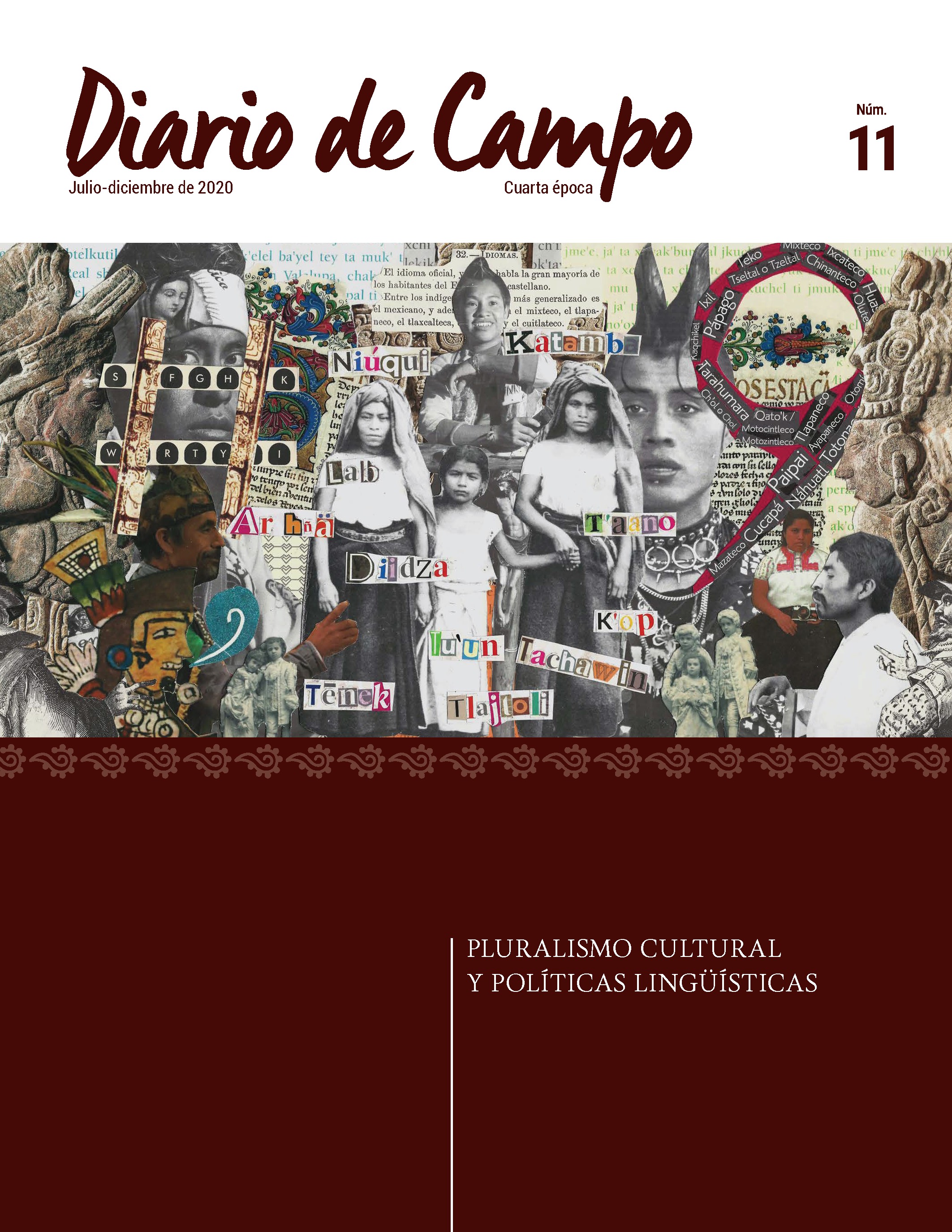
This issue of Diario de Campo is dedicated to cultural pluralism and linguistic policies in Mexico –a multicultural country in which 68 linguistic groupings and more than 360 variants are recognized–, and is part of the “International Decade of Indigenous Languages (2022-2032)”, declared by the General Assembly of the United Nations as an initiative to call the conscience of countries and their governments, to preserve, revitalize and disseminate the rich legacy of native languages, many of which are at high risk of disappearance. The excellent set of papers compiled in the journal, address various issues facing indigenous languages today: loss and revitalization, education, artistic creation, access to justice, documentation of native languages, among others. Thus, the works that we present in this edition call our attention to the need to have sensitive and adequate linguistic policies to the different realities that native communities live, and in this sense, contribute to the recognition and protection of linguistic diversity.
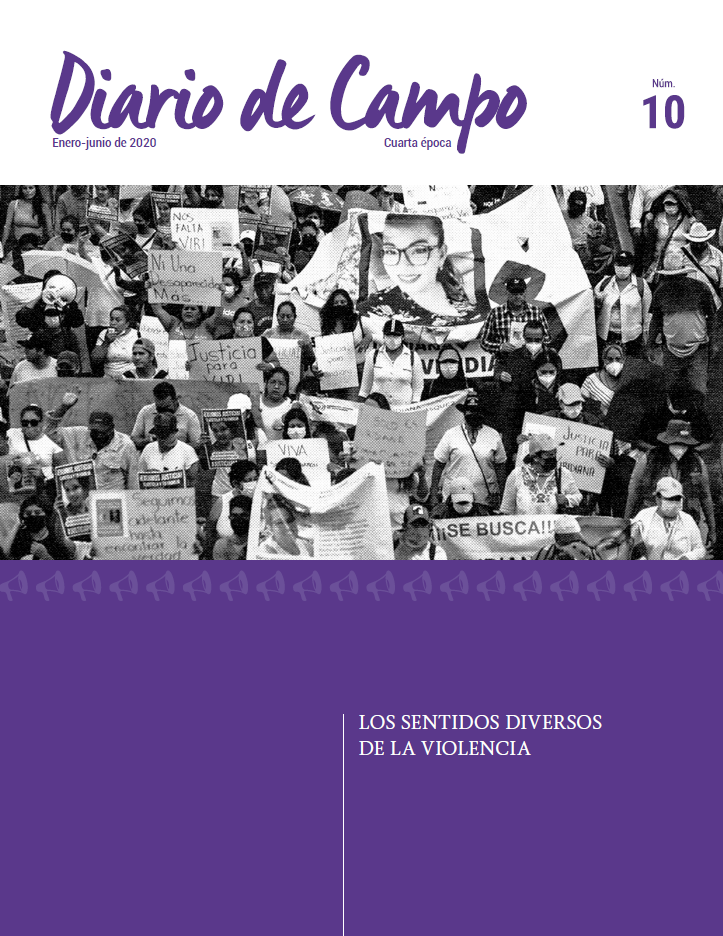
This issue of Diario de Campo is preceded by the "Permanent Seminar on Interdisciplinary Views of Violence" of the Physical Anthropology Department of INAH, which brought together researchers from different disciplines and institutions interested in discussing the broad problem of violence. Violence is not biologically determined, rather, it originates in the ways in which we establish social relationships, in the hierarchies with which human diversity is classified and from which asymmetries are generated by a set of mechanisms such as prejudice, stigma, discrimination, exclusion, indifference, among others, which structure and reproduce power relations in the family, work, educational and institutional spheres. For this reason, from an anthropological perspective, naming violence must be done in the plural, contemplating the particular historical and sociocultural context, to account for the various meanings and expressions –visible or symbolic– of violence, which are inscribed in the bodies, in life experiences and identities.
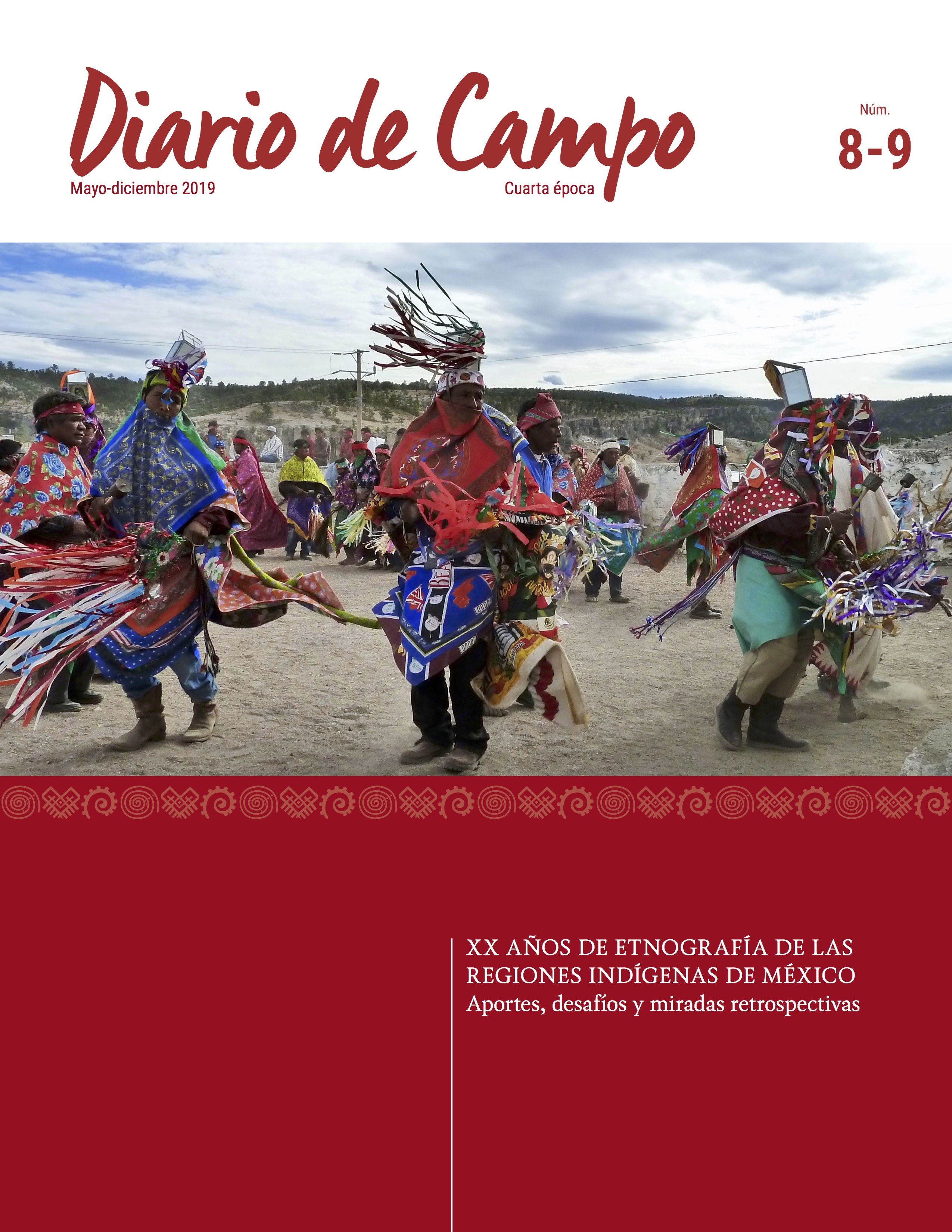
This special edition of Diario de Campo is dedicated to the 20th Anniversary of the National Ethnography Program of the Indigenous Regions of Mexico. In this double issue we present a dialogue, and at the same time a questioning about the ethnographic exercise of a Program that constituted a turn in the way of doing anthropology at INAH, due to the deployment of thematic lines to document the different areas of indigenous peoples –social organization, identity , territory, worldview, rituality, biocultural heritage, socio-environmental processes, inequality and discrimination–; and due to its national character, in which a hundred anthropologists participated conducting ethnographic research in regional teams throughout the country. The articles included in this special issue are part of the Program's memory, which is reviewed to reflect on the Program's contributions to anthropology, to INAH, to the populations studied and society in general.
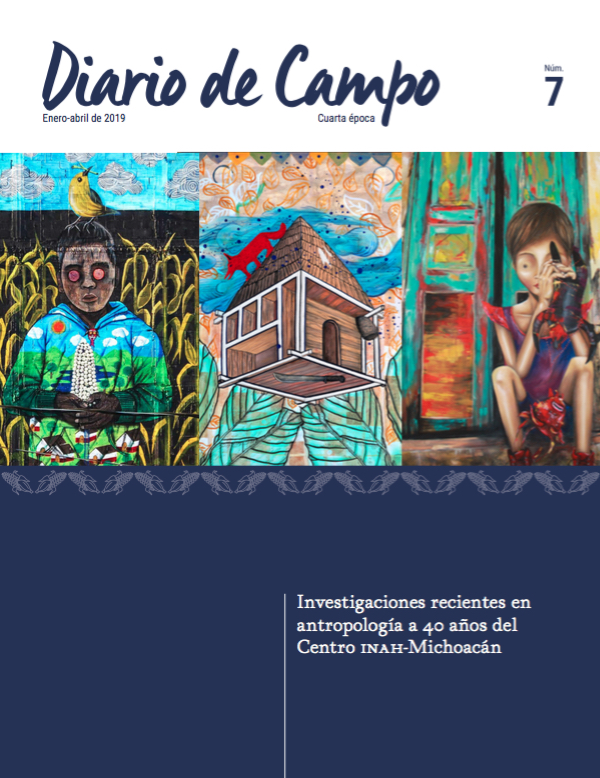
During the years 2018 and 2019, were celebrated the 40 years of the INAH Michoacán Center and the 20 years of the National Ethnography Program of the Indigenous Regions of Mexico, which has maintained an uninterrupted presence in the state of Michoacán. For this reason we have prepared this issue of Diario de Campo Journal , to give an overview of recent research in linguistics, social anthropology, ethnohistory, archeology and paleontology carried out under the auspices of the INAH Center, highlighting the importance of confluence and cultural diversity of the region. The multidisciplinary profile of this volume is due not only to being grouped in the same workplace, but also to the possibility of a continuous approach to research in the different specialties and the exchange of points of view on its development, on ideas and new discoveries that have been constant in most areas.
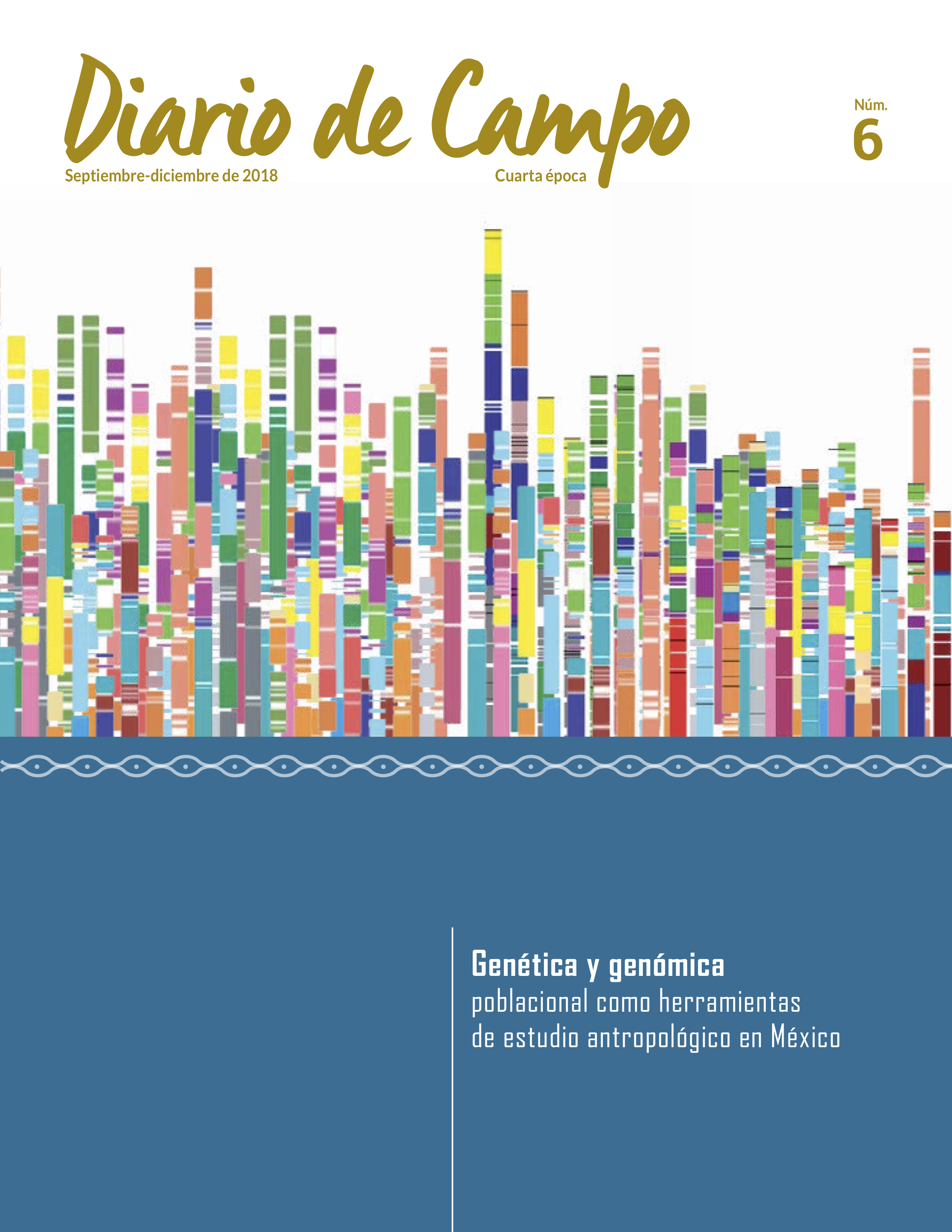
In this special edition entitled Population genetics and genomics as tool anthropological studies tools in Mexico, some of the lines of work of research groups in our country are presented in context from the perspective of molecular anthropology, based on the analysis of both modern and ancient mexican populations. Population genetics and genomics are two young disciplines, and in our country they have found their niche within anthropological research to answer some of the questions that in the past were difficult to answer using other strategies, such as anthropometric techniques based on relationship between anatomical form and function, and models of natural selection on the biology of populations.
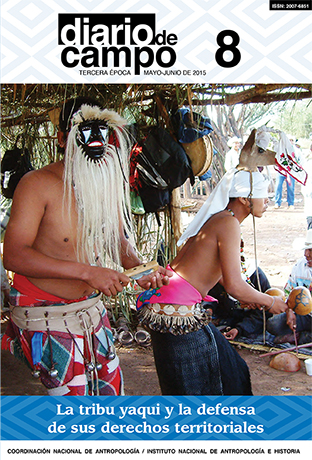
Conscientes de la importancia de analizar los procesos de despojo y resistencia entre los pueblos
indígenas, en este número de Diario de Campo reunimos diversas miradas históricas y contemporáneas
sobre la lucha de la tribu yaqui por la defensa de sus derechos territoriales, con la idea
de aportar elementos para la reflexión acerca de un fenómeno que de una manera u otra impacta
al país entero. Esperamos que resulte de interés y favorezca el debate informado entre los colegas.
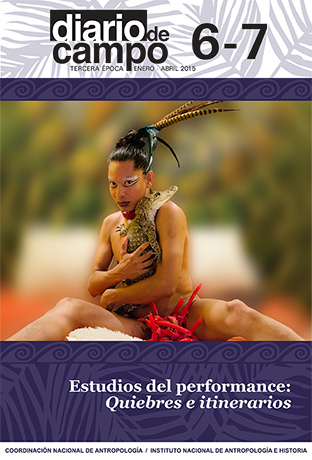
Con el presente número de Diario de Campo iniciamos una nueva época de este boletín periódico de la Coordinación Nacional de Antropología del inah, dedicado a fomentar la comunicación y el intercambio de ideas entre los investigadores y profesionistas que, desde este instituto y otros frentes académicos, nos dedicamos al estudio, divulgación y salvaguarda de la memoria,el patrimonio y la diversidad cultural de México.
[...] Diego Prieto Hernández
Coordinador Nacional de Antropología. Director de Diario de Campo.
Portada: Varia Visual Creativos, con base en imágenes reproducidas en Diario de Campo, primera época.
I am pleased to present this year's field notes, the 14th and last of the second stage in the life of this body communication INAH researchers, since 1998, produces and distributes the National Coordination of Anthropology, currently my charge. For nearly 15 years this magazine has been an accessible, flexible and attractive platform for the exchange and discussion of issues before us, to strengthen the bonds of communication and recognition among researchers and to inform the INAH academic community and its institutions close the progress we made in the course of our research on Mexico, its people, its history, heritage and cultural diversity. Repeatedly our CEO, Teresa Franco, has raised the need for anthropological and historical research to better fulfill the duties which the law and the Mexican government have conferred the INAH in regard to the identification, knowledge , assessment, care, legal and social protection and sustainable use of the immense cultural heritage of Mexico. This means strengthening our academic and training work on the basis of freedom of inquiry, critical thinking, and also the passion and commitment to making social custom and three quarters of a century resulted in the INAH.
[...]
Diego Hernández Prieto



The bulletin invites this time to look and rethink the north, to know a little more about some research being conducted in this vast region. With many Norths, both historical and contemporary imagery, will not reach to cover them all, but to offer a diverse range of researches are predominantly in Chihuahua. The file, "Anthropology Chihuahua recent" coordinated by Penagos Esperanza and José Francisco Lara, consists of nine trials resume classics as hunter-gatherer studies and others like the agrarian struggle or experiences of anthropological expertise.
[...] Editorial
Cover image. Barbara Beltramello, Nolbia Navarro in the demonstration in the Cloister of Sor Juana, Mexico City, during the Caravan of Mothers of Missing Migrants, 2012.

The human body, one of the central themes of physical anthropology, is discussed in this number coordinated by Erika Almady Sanchez. We titled "Periplos around the body" to the set of six trials in which the multiple meanings of the term is approached from different perspectives. Some studies are more concerned with conceptions of illness or discussion of the notion of the body as an analytical category to rescue qualitative data; also abound reflections on the socially constructed body, your emotions and even the body as equity.
[...] Consejo Editorial
Cover: Martín Chambi, at the Organist Chapel Tinta © Martin Chambi Photographic Archive.
ISSN: 2007-6851



Este obra está bajo una licencia de Creative Commons Reconocimiento-NoComercial 4.0 Internacional.
LEGAL NOTICE
All contents from this site are property of the National Institute of Antropology and History of Mexico. Content can be downloaded and shared without modifications, only when authority is aknowledged and without commercial intent.
Dirección de Innovación Institucional
Coordinación Nacional de Desarrollo Institucional - Instituto Nacional de Antropología e Historia
Hamburgo 135, Colonia Juárez, CP 06600, Alcaldía Cuauhtémoc, Ciudad de México, México
